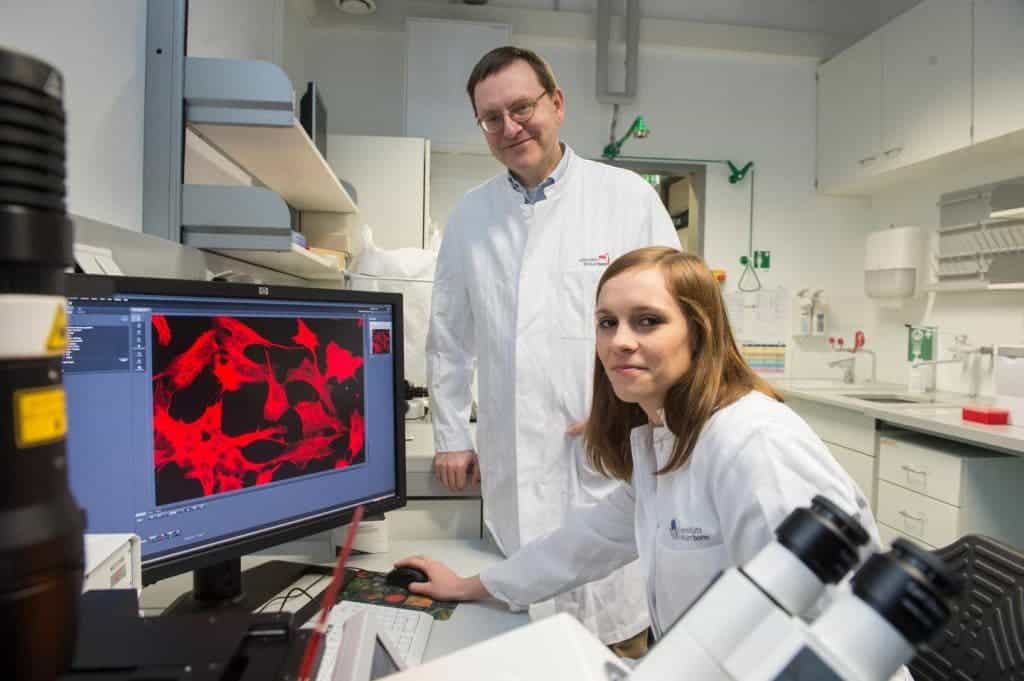Either because of the quality of our environments or due to the radical shifts in diet and lifestyle we’ve seen since the industrial revolution, more and more people around the world are becoming overweight. This translates into a growing number of patients suffering from associated conditions, such as diabetes or cardiovascular diseases. As most of us can’t muster enough motivation to exercise (sans drugs, that is) many pin their hopes on the pharmaceutical industry finding a pill to burn love handles right off.
And such a pill could be available sooner rather than later — an international team has discovered that by inhibiting Gq protein production in adipose tissue, cells can be re-purposed from storing fat to burning it.

Image credits Barbara Frommann/Uni Bonn
Adipose or fat tissue is usually made up of white cells that store energy, brown cells that burn it to heat us up when we’re cold and beige cells that can perform either role. In the case of significantly overweight people this type of tissue contains a large number of white cells but lacks the brown variety. Prof. Dr. Alexander Pfeifer from the Institute of Pharmacology and Toxicology at the University of Bonn has spent the last few years researching a way to make the cells switch from one role to the other.
“We are looking for targets for new pharmaceutical products to one day be able to effectively combat obesity as the cause of numerous widespread diseases, such as diabetes or cardiovascular disease,” Pfeifer said.
Pfeifer worked closely with a team made up of members from San Diego and Bethesda, USA, Gothenburg, Sweden and the Universities of Heidelberg and Leipzig in Germany. They observed that mouse and human brown fat cells have a particularly high number of Gq protein receptors. As this protein is known to function as a medium for information transfer within the body, the team decided to test if it could perform the switch they were looking for.
When they activated the Gq protein in mouse fat cells, the number and quality of the brown cells decreased.
“On the other hand, if Gq is blocked with an inhibitor, more brown fat cells mature,” says Ph.D. student Katarina Klepac from Prof. Pfeifer’s team.
This also holds true for beige cells, and the team now has their hopes pinned on them. As they don’t have a fixed role in adipose tissue, blocking the Gq protein causes them to develop primarily into fat-burning mechanisms. The team re-checked their theory using human cells cultured in the laboratory, with the same effect.
“Even in human fat cells, it was shown that brown fat cells can grow much better once Gq proteins were blocked,” says Prof. Pfeifer.
According to him, this could be the starting point for the development of active substances which boost fat burning in obese patients. But their work is still in an early phase, and more work has to be done before it can lead to a safe and efficient drug.
“To date, there are no drugs which directly cause white fat cells to convert into brown fat cells. However, we still have a long way to go,” Pfeifer concludes.
The full paper, titled “The Gq signalling pathway inhibits brown and beige adipose tissue” has been published online in the journal Nature Communications and can be read here.






